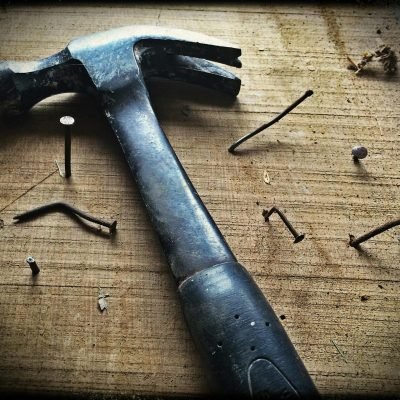Why Is a Hammer Head Shaped That Way?

If you’ve ever held a hammer and wondered, why does the head look like that?—you’re not alone. For something that seems so simple, a hammer head has a surprisingly thoughtful design.
In this article, we’ll answer the strangely common question: Why is a hammer head shaped the way it is? From the flat face to the claw in the back, every curve and edge of a hammer serves a purpose. Let’s break it down.
What Is a Hammer Head?
The hammer head is the heavy top part of the hammer, made of metal, designed to deliver force onto a target. It’s usually attached to a wooden, fiberglass, or steel handle and comes in a variety of shapes depending on the type of hammer.
The most common hammer? The claw hammer—used for driving nails and pulling them back out.
But whether you’re using a framing hammer, a ball peen hammer, or a tack hammer, the overall head shape follows a basic formula that hasn’t changed much in centuries.
Why Is a Hammer Head Shaped That Way?
Here’s what each part of a hammer head does and why the shape matters:
1. The Flat Face (Striking Surface)
Purpose: Drives nails, breaks things, transfers force.
Why It’s Flat: A flat face spreads out the impact and reduces the chance of the hammer slipping off the nail. The slightly textured surface (called a milled face on some hammers) helps grip the nail head.
2. The Cheek (Side of the Head)
Purpose: Adds weight and strength.
Why It’s Bulky: The cheek’s mass determines how much driving power the hammer can deliver. The thicker the cheek, the harder the hit.
3. The Claw (Curved Split End on Back)
Purpose: Removes nails, pries boards, opens stuck things.
Why It’s Curved and Split: The split allows it to slide under nail heads. The curve gives leverage—turning a small pull into a powerful prying force.
4. The Neck (Where the Head Meets the Handle)
Purpose: Stabilizes the connection.
Why It’s Narrow: A thinner neck absorbs some shock while keeping the head tightly fixed to the handle.
5. The Waffle Face (on Some Framing Hammers)
Purpose: Grips nail heads better.
Why It Exists: On job sites, a smooth hammer face can slip off a nail. A milled or waffle-texture keeps things in place—even in wet or dirty conditions.
The Physics of the Hammer Head
A hammer’s head is a perfect example of basic physics in action:
Mass × Acceleration = Force
The heavier the head, and the faster you swing it, the more impact force you deliver.Shape Controls Accuracy
A well-designed flat face ensures you hit the target squarely and safely.Leverage From the Claw
The curve on the back multiplies pulling force, so you can remove nails with minimal effort.
External Authority
The Hammer Museum in Haines, Alaska